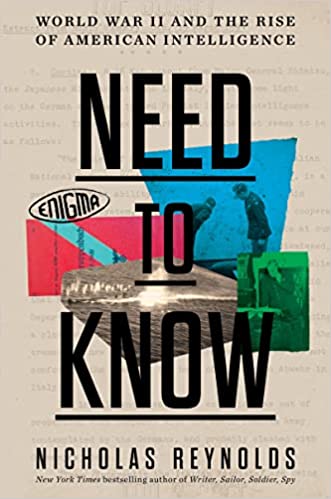Need to Know: A Chevron Ross Book Review

Need to Know describes the birth of American intelligence-gathering operations during World War II. Historian Nicholas Reynolds goes into great detail about the many individuals and agencies who worked – sometimes together, often in opposition to one another – to create an international spy system similar to Great Britain’s MI6, which existed before Germany attacked Poland on September 1, 1939.
Other historians have covered such breakthroughs as the cracking of the German and Japanese military codes. Reynolds provides additional background in the embryonic works of two men critical to the Japan program: Herbert Yardley, a State Department telegraph clerk, and William Friedman, a one-time agricultural geneticist. He also recounts how the gathering war clouds led President Roosevelt to appoint William Donovan, a Wall Street lawyer, to head America’s first-ever comprehensive intelligence-gathering operation –the Office of Strategic Services.
Though code-breaking was instrumental in America’s victory in the Battle of Midway, skepticism continued to surround its value in the minds of some officials. Proponents cranked out enormous amounts of information, but most of it proved of little practical value. One major success was its targeting of Admiral Yamamoto, architect of Japan’s Pearl Harbor and Midway campaigns.
The reader learns that bureaucratic infighting during World War II was as intense as the war itself. Interservice rivalries and personality conflicts hampered coordination of intelligence work by OSS, the Army, Navy, and J. Edgar Hoover’s FBI, to the point that Roosevelt sometimes had to play referee. But we learn much about the personalities, strengths and shortcomings of the many individuals who toiled patriotically, sometimes at great personal danger to themselves, to gather information that helped the Allies win the war.
Reynolds’ research is so thorough that it produces a sometimes dizzying cascade of names, military acronyms, and detailed interactions between various hierarchies. A dedicated reader willing to sift through them will find a well-documented treasure trove of information. The result is a clear understanding of how wartime intelligence-gathering resulted in the birth of the Central Intelligence Agency. Though it sometimes makes for challenging reading, I found the book highly informative. Nicholas Reynolds has done history a great service.
